Chicory (Cyihorium intybus) is a leafy vegetable that during the first year of planting forms a rosette leaf and in the second - a flowering stem with purple flowers. It is known by the name "scared vegetable", because its fragile structure composed of delicate, pale leaves.
It is these delicate leaves that grow from roots and used as a vegetable. We distinguish several types of chicory, but all grow in the dark and they need almost no sunlight.
For this reason, in the past chicory was treated as an "unclean plant" and often used for making black magic.
Chicory comes from the Mediterranean coast and South Asia, and in Europe it spread more widely in the 16th century.
However, the fragile structure of this leafy vegetable had been used for food by ancient Egyptian and Roman warriors, who fully benefited from its nutritional and medicinal qualities.
An interesting fact is that chicory was used by the Incas, as a coffee substitute. To do this, the root is dried and soaked, it is a natural ingredient with very specific flavor and aroma.
Known for millennia as a useful therapeutic and delicious food, chicory root is among the first places between dietary vegetables and is a suitable plant food for diabetics. Chicory salad is a popular food in the winter and spring months and you can often see them as part of the menu in top restaurants.
Types of Chicory
There are several types of chicory are prominent and useful culinary value.
Belgian chicory - it's pretty popular, is characterized by its small and elongated shape resembling a cigar. There is a characteristic slightly bitter flavor, but a very pleasant taste. The more bitter heads have greenish edges, while those with yellow are preferred;
Curly Chicory - quite crunchy, slightly bitter and with curled leaves. There are external green leaves that are bitter and more suitable and palatable for consumption are the internal, pale leaves;
Red radicchio - Italian red chicory - a very popular type of chicory, with a characteristic reddish color. There are several varieties of this – including more rounded and more elongated ones, but all enjoy a great popularity because of their good taste. Outwardly, it looks just like red cabbage, but its taste is slightly bitter. Interestingly, the vegetable is removed from the ground and placed in water in a dark place, which slows down the production of chlorophyll, so its green pigment is lost.
Cultivation of chicory
Chicory can easily grow at home - in a greenhouse or even in containers in the basement. For this purpose is needed root length of 15-20 cm, with a diameter of 3-5 cm and a well shaped top bud forehead. If the roots are longer, they should be clipped, because everyone should have the same length. Recess the well moistened soil and arrange them face up. They should be buried in soil of the same depth and equidistant from each other.
Top loose, rotten farmyard manure and sand thickness of 25-30 cm is needed. It is important to note that the more dense is the outer layer, the better quality cobs will be grown. It is necessary to maintain constant humidity and cover their tops.
During the first week the temperature should be about 10 degrees, and later, at 15 to 18. Chicory spikes grow to the surface layer in 25-30 days. Then you need to carefully remove the lining and trim discolored books with 1 cm of the root crop. Around 200-250 cobs can be obtained from 1 sq. meter.
Composition of chicory
Chicory contains insulin in large quantities. That makes it extremely suitable diet and food for people suffering from diabetes. Chicory salad is also rich in inulin and fructose . Actually, chicory is richer in vitamins and minerals than traditional salad options. Chicory is also popular as a means to stimulate the appetite.
The composition of the "frightened vegetables" have high doses of calcium, phosphorus, iron, magnesium and vitamins A1, B1, B2, C, E. The leaves of chicory are also very rich in insulin, protein, sugars, mineral salts. In essence, insulin is a bitter substance with beneficial effects on digestion. In 100 g of chicory contains: 23 calories, 1.7 g protein, 0.2 g fat, 4 g carbohydrates, 0.9 g fiber,
Selection and storage of chicory
Chicory is a delicate leaf vegetable, the selection of which should be very carefully done. It is best to prefer the small, light and compact heads. Carefully observe that the tips of the leaves are bright yellow, because they are much better than brown or green tops. To keep structure of the crunchy leaves, it is better to store it for no more than 3-4 days in the refrigerator.

Culinary use of chicory
As a food, chicory is valued for its crunchy texture with a delicate bitterness that is easily removed if the leaves stay in water with a little vinegar. From then on, chicory can be prepared in various ways - boil, stew, bake, etc. In fresh form, chicory ensures full flavors and nutrients.
The pleasant slightly bitter taste of chicory combines well with other green leafy vegetables, spicy cheeses, nuts, pecans, pine nuts, almonds, but also combines well with garlic, red beets or sliced apples and pears.
The leaves of the chicory can be used as padding for different entrees - sprinkled with a little lemon juice or olive oil on them and can be arranged with small slices of boiled eggs, aromatic cheeses, fish, chicken or meat. Of course, chicory can be included in the composition of different dishes, baked dishes, stews, sauces for pasta, etc. It can also be roasted and grilled to cook a soup, etc.
In Italy radicchio enjoys extremely high popularity and is often baked, grilled, sprinkled lightly with olive oil, and if you add to risotto, it yields a nice pink color. In the United States, it also enjoys popularity as the most often consumed item in salads . Chicory roots can also be used for making coffee. With it, even strudel can be prepared.
Benefits of chicory
With thousands of proven health benefits, chicory is food that is now used for prevention and improvement of human health. Because it contains inulin, the bitter taste is able to improve the appetite and stimulate the digestive organs.
Chicory has a cleansing effect on the blood.
If you've got an eating disorder or suffer as a result of overeating, colds or flu, eating chicory will surely benefit you. In addition to the benefits for the stomach, chicory is good for the heart. If you regularly eat this useful vegetable, it can neutralize the harmful effects of alcohol and fatty foods.
With the inclusion of chicory in your weekly menu, you can reduce the risk of cardiovascular disease are strengthen your immune system, it will make you feel calm and balanced. In this regard, a decoction of chicory works miracles because it is able to eliminate stress and nerves.
For people who want to lose weight, a diet containing chicory is very suitable. Chicory is low-calorie, works well in the stomach, and improves digestion and cleans the blood, resulting in reduced sugar content in the blood and increases in the endurance of man.
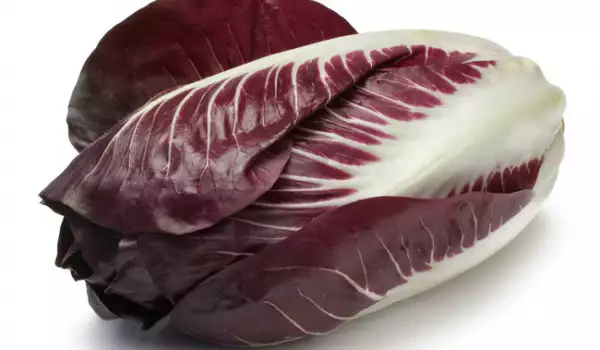






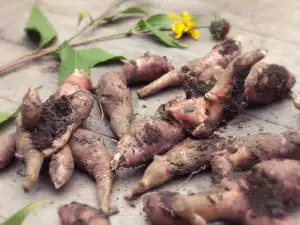
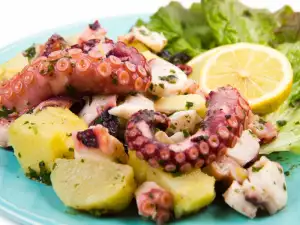
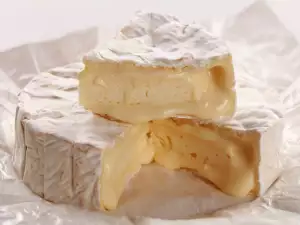




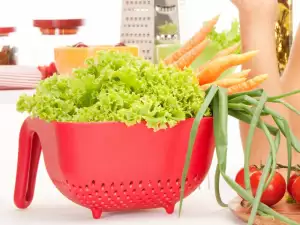


Comments